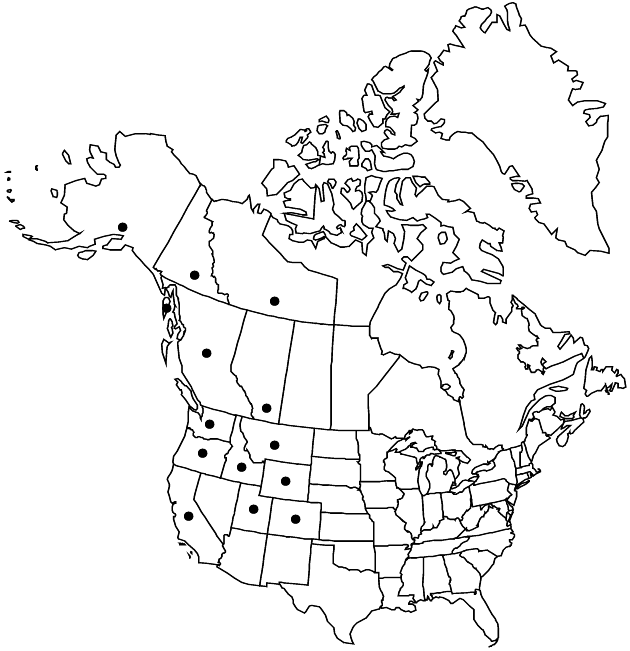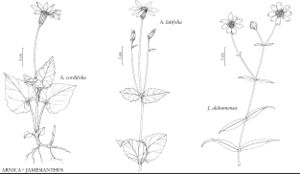Arnica latifolia
Mém. Acad. Imp. Sci. St.-Pétersbourg, Sér. 6, Sci. Math. 2: 147. 1832.
Plants 10–50 cm. Stems usually simple, sometimes branched distally. Leaves 2–4 (–6) pairs, cauline (basal leaves often persistent on sterile rosettes), petiolate (proximal, petioles relatively short, broadly winged) or sessile (mid and distal); blades lance-elliptic to ovate, 2–10 × 1–6 cm, margins serrate to dentate, apices obtuse to acute, faces glabrous or sparsely villous. Heads 1 or 3–5 (–9). Involucres narrowly turbinate. Phyllaries 8–20, lanceolate to oblanceolate. Ray-florets 8–15; corollas yellow. Disc-florets 20–90; corollas yellow; anthers yellow. Cypselae dark-brown, 5–9 mm, sparsely villous; pappi white, bristles barbellate. 2n = 38, 76.
Phenology: Flowering Jul–Aug.
Habitat: Relatively moist, montane conifer forests to subalpine meadows
Elevation: 500–3300 m
Distribution

Alta., B.C., N.W.T., Yukon, Alaska, Calif., Colo., Idaho, Mont., Oreg., Utah, Wash., Wyo.
Discussion
Selected References
None.
